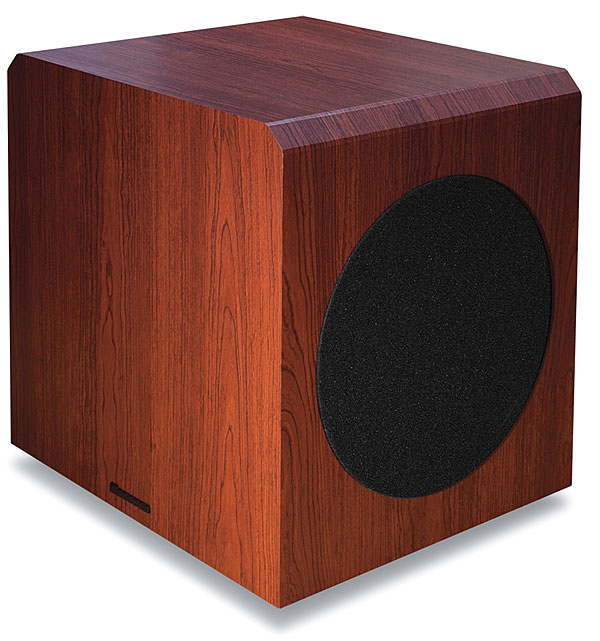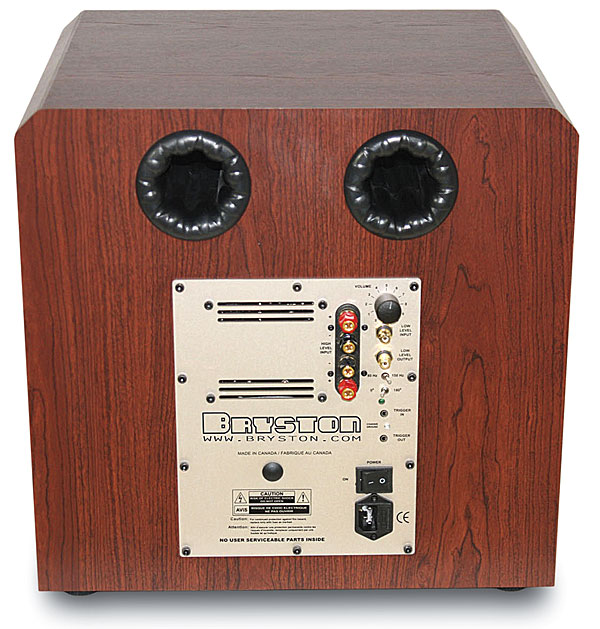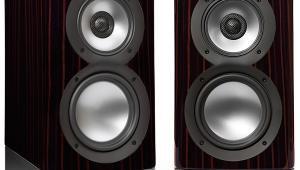Bryston Mini A Speaker System Review Page 2
Left Behind (DTS-HD Master Audio) is a Nicolas Cage airplane action-drama with more than its fair portion of weirdness. I should probably avoid serving up spoilers, so let’s just say that at least two different kinds of vehicle succumb to the force of gravity. The sub accommodated these high-decibel low-frequency events with aplomb.

The Brystons’ mix of punishing material culminated with The Expendables 3 (Dolby Digital). Most movies with helicopter surround effects depict the copter as a monophonic image whirling around the soundfield. But here, the viewpoint shifted to in-copter surround effects—this movie’s sonic highlight, and a sign of good power handling. As expected by now, the Brystons delivered gunfire and military explosions more palatably than most speaker systems. Still, something that had bugged me throughout all the movies—lackluster (albeit intelligible) vocal timbre—finally moved me to run the receiver’s test tones again to check timbre matching between the AC-1 Micro center and Mini A monitor. Usually, a center that is poorly timbre-matched to the satellites will have a different overall tonal balance than the left and right speakers, as I found to be the case with this system in my listening room. Speaking voices and other effects centered in the AC-1 Micro seemed a little bland compared with effects and singing voices carried by the Mini A monitors in the L/R front and surround positions.
There’s the Sparkle
And so it was no surprise that two Mini A speakers delivering music showed the Bryston system in a different light. “There’s the sparkle!” I wrote as Kissin Plays Lizst rotated in the universal player. Evgeny Kissin’s fluid playing brought out loads of tone color in what I’d erroneously pegged as veiled speakers. If that was the sauce, the rhythmic incisiveness of speakers and sub was the meat, bringing out all the small dynamic nuances. Moving on to the Brahms Serenade No. 1, with Michael Tilson Thomas leading the London Symphony Orchestra, I heard a beautiful balance of frequencies and spatial information that approximated a good concert hall. Carlos Kleiber’s Deutsche Grammophon recording of Beethoven’s Symphony
No. 5 with
the Vienna Philharmonic—the first movement, fate knocking at the door—confirmed my assessment of the solid bottom end, with its sawing basses and pounding kettledrums. And the overall feel was perfectly suitable for the rambunctious volumes the Fifth demands.

Robyn Hitchcock’s The Man Upstairs hews to the spare instrumentation of stripped-down albums like I Often Dream of Trains, adding strategic cover versions of Bryan Ferry, the Doors, the Norwegian band I Was a King, and others. Brilliantly stark production by the great Joe Boyd frames the voice candidly, rather than processing it into oblivion—and the Mini A’s painstaking tonal and spatial realism stepped out of the way and delivered the music with what must have been the intended purity. Hitchcock has a slightly nasal and deeply resonant voice, which might trip up a speaker with nasal or chest emphasis. But the Mini A avoided these obvious tripwires and brought me closer to the emotional heart of this album.
As I so often do, I turned to my first-generation CD of the Beatles’ Abbey Road for a quick Ringo check on “Come Together” and “The End.” (Have drums ever been better recorded on a rock record?) I liked the Bryston treatment so much, however, that I had to hear everything in between. Played full-range, the Mini A had enough bass to keep bass lines in one piece, capture the pitch and impact of toms, and even manage a decent bass-drum thunk. Switching the sub back on firmed up the bass drum and redistributed frequencies just below the crossover a tad differently. But the system was equally listenable either way, making the Mini A one of the few monitors I’ve reviewed that’s musically complete unto itself. The system benefits from addition of a sub for music playback, but only a little.
This Bryston system was a provocative one. The Mini A monitor rated alone is a five-star speaker, though the AC-1 Micro, if rated separately, would be at least a full notch below the very best I’ve heard. A fifth Mini A functioning as an upright center channel would have likely garnered the system a perfect five; something for shoppers to consider. As for the subwoofer, the Model A Sub was as good a 10-incher as I’ve ever heard, which it ought to be at that price. On the whole, while this Bryston setup is fine for movies, at heart it’s truly a music lover’s system.




























































